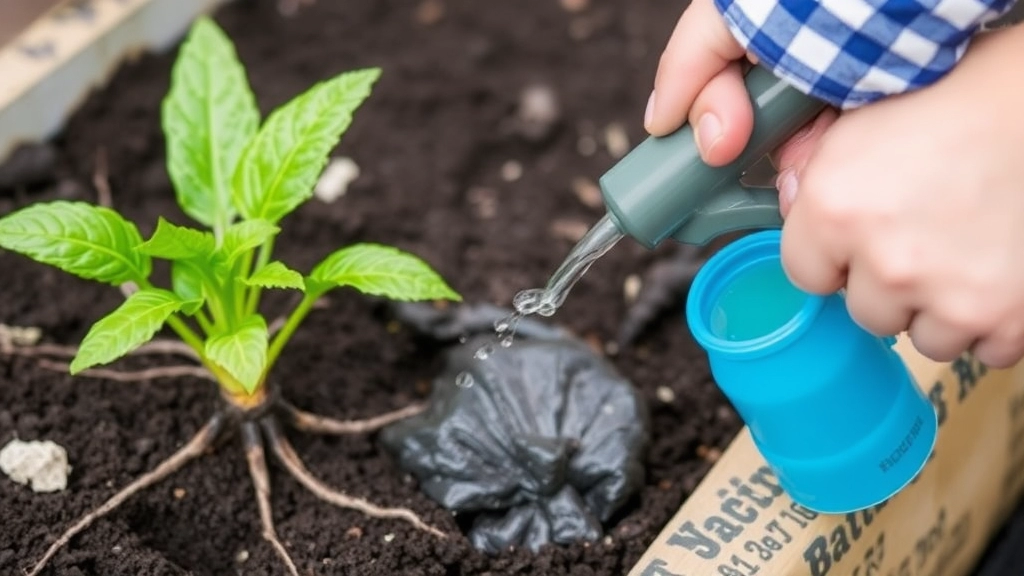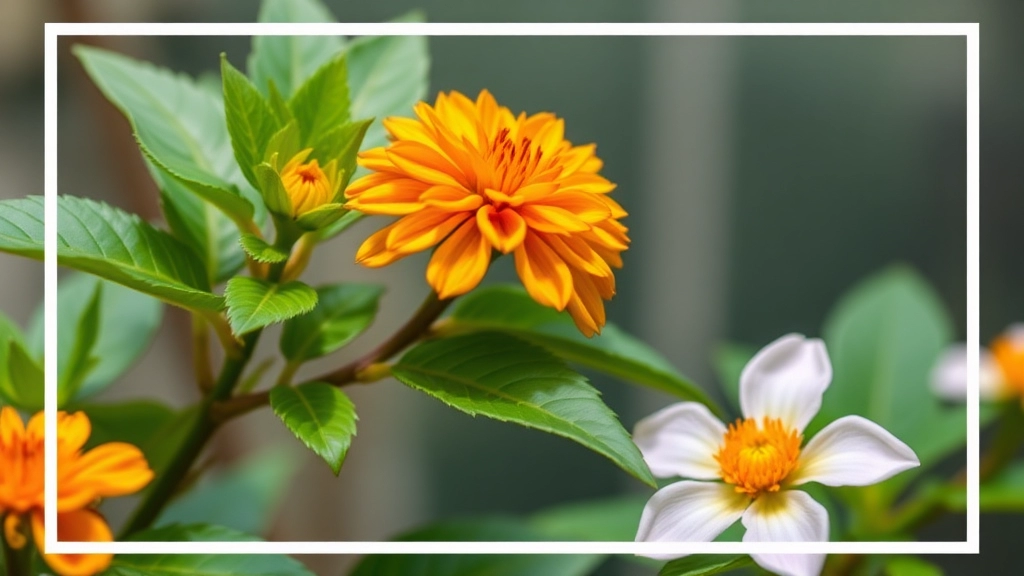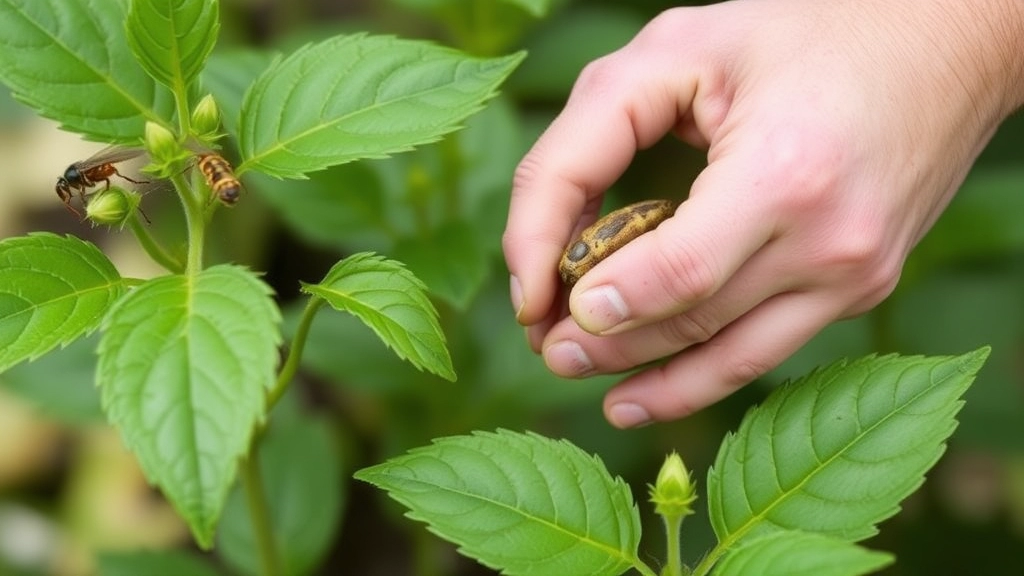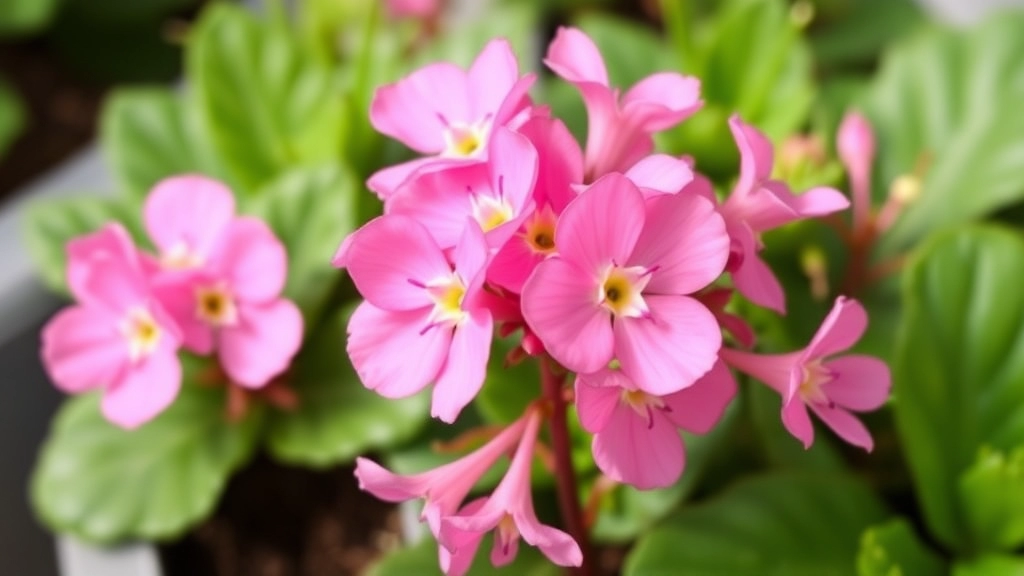Caring for a Pink Kalanchoe Plant
Caring for a pink kalanchoe plant can be a rewarding experience, especially when you see those vibrant pink blooms flourish. To keep your pink kalanchoe healthy, start by ensuring it gets the best light conditions. These plants thrive in bright, indirect sunlight, making them perfect for a sunny windowsill. However, avoid direct sunlight, as it can scorch the leaves.
Watering
Watering is another crucial aspect of pink kalanchoe plant care. Overwatering can lead to root rot, so let the soil dry out between waterings. A well-draining soil mix is essential to prevent water from pooling around the roots. Additionally, occasional fertilization during the growing season can promote lush blooms. Keep an eye out for common pests and diseases, and prune your plant to maintain its shape and health.
When it comes to nurturing your Pink Kalanchoe, one of the most pressing concerns is ensuring it receives the right light conditions.
### Why Light Matters
Pink Kalanchoe, with its vibrant blooms, thrives under specific lighting conditions. Too little light can lead to leggy growth, while too much can scorch its delicate leaves.
### Optimal Light Requirements
– **Bright, Indirect Light**: Aim for a spot that gets plenty of bright, indirect sunlight. A south or east-facing window is ideal.
– **Avoid Direct Sun**: Direct sunlight can be harsh, especially during peak hours. If you notice the leaves starting to curl or turn brown, it may be a sign of too much sun.
– **Supplemental Lighting**: During the darker winter months, consider using grow lights to maintain healthy growth.
### Signs of Proper Lighting
– **Healthy Growth**: Your Kalanchoe should have sturdy stems and vibrant, fully-formed flowers.
– **Leaf Colour**: A rich green hue indicates it’s getting the right amount of light.
### Adjusting Light Conditions
– **Seasonal Shifts**: As the seasons change, be prepared to adjust your plant’s location.
– **Rotation**: Rotate your plant every few weeks to ensure even growth on all sides.
For more tips on ensuring your Pink Kalanchoe thrives, check out our [complete care guide for pink florist Kalanchoe](https://planthq.org/complete-care-guide-for-pink-florist-kalanchoe/). Additionally, if you’re interested in learning about other Kalanchoe varieties, explore our [guide on Kalanchoe Beharensis](https://planthq.org/exploring-kalanchoe-beharensis-varieties-care-characteristics/).
Watering Guidelines to Prevent Root Rot

So, you’ve got your gorgeous Pink Kalanchoe, and now you’re wondering how to keep it thriving without turning it into a soggy mess.
Watering can be a bit tricky, but it’s all about striking that perfect balance.
Key Tips for Watering Your Pink Kalanchoe
- Check the Soil: Before you even think about watering, poke your finger into the soil about an inch deep. If it feels dry, it’s time to water. If it’s still moist, hold off a bit longer.
- Water Thoroughly: When you do water, make sure you soak the soil well. This encourages deep root growth, which is essential for a healthy plant.
- Drainage is Key: Always ensure your pot has drainage holes. Standing water is a recipe for root rot, and we definitely don’t want that!
- Frequency Matters: In general, watering every 2-3 weeks should do the trick, but this can vary depending on your environment. Hotter, drier conditions might need a bit more frequent watering.
- Seasonal Adjustments: During the growing season (spring and summer), your Kalanchoe will need more water. In the fall and winter, cut back as the plant goes dormant.
- Use Room Temperature Water: Cold water can shock the roots. Stick to room temperature to keep your plant happy.
A Little Story
I remember when I first got my Pink Kalanchoe. I was so eager to keep it healthy that I overwatered it, thinking more was better. Spoiler alert: it wasn’t. The leaves started drooping, and I panicked! After some research, I learned that less can be more when it comes to watering.
Now, I’m all about that finger test, and my plant is thriving!
Choosing the Right Soil for Healthy Growth
When it comes to nurturing your Pink Kalanchoe, the right soil is crucial for promoting robust health and vibrant blooms. Many plant enthusiasts often wonder, “What type of soil is best for my Kalanchoe?”
Soil Type
For optimal growth, choose a well-draining soil mix. A combination of the following works wonders:
- Cactus Mix: This is specifically formulated to prevent water retention.
- Perlite or Pumice: Adding these materials enhances drainage and aeration.
- Organic Matter: Incorporate some compost to provide essential nutrients.
pH Level
Aim for a slightly acidic to neutral pH, ideally between 6.0 and 7.0. This range supports nutrient uptake and overall plant health.
Container Considerations
If you’re potting your Pink Kalanchoe, ensure that the container has drainage holes. This prevents excess moisture from accumulating at the bottom, which can lead to root rot.
Repotting Tips
Consider repotting every couple of years to refresh the soil and provide your plant with new nutrients. When repotting, gently shake off the old soil to allow for healthy root development. For more detailed guidance, check out our Hot Pink Kalanchoe Plant Tips & Tricks.
Additionally, you might find our Complete Guide to Caring for Your Kalanchoe Succulent helpful for more comprehensive care tips.
Fertilization Tips for Vibrant Blooms

Having discussed the watering guidelines essential for your Pink Kalanchoe, let’s delve into the importance of fertilization to ensure those stunning blooms thrive.
Why Fertilization Matters
When it comes to vibrant flowers, fertilization plays a crucial role. Without the right nutrients, your Kalanchoe may struggle to produce the colourful blooms you desire. Here are some straightforward tips to keep your plant flourishing:
- Choose the Right Fertilizer: Opt for a balanced, water-soluble fertilizer with an N-P-K ratio of 15-30-15. This ensures your plant gets the essential nutrients it needs.
- Frequency of Application: Fertilize your Pink Kalanchoe every 4-6 weeks during the growing season (spring and summer). In autumn and winter, reduce this to once every 8 weeks, as the plant enters a dormant phase.
- Dilution Is Key: Always dilute the fertilizer to half the recommended strength. This prevents over-fertilization, which can harm your plant.
- Signs of Nutrient Deficiency: Keep an eye out for signs such as yellowing leaves or stunted growth. These can indicate a lack of nutrients and may require an adjustment in your fertilization routine.
- Organic Options: If you prefer organic methods, consider using compost or fish emulsion. These can provide a slow release of nutrients, promoting healthy growth.
By following these fertilization tips, you’ll set the stage for your Pink Kalanchoe to produce its most vibrant blooms.
Pruning and Shaping Your Pink Kalanchoe
Are you wondering how to keep your Pink Kalanchoe looking vibrant and healthy? Pruning is an essential part of maintaining its beauty and encouraging new growth.
Why Prune?
Pruning helps to:
Common Pests and Disease Prevention

So, you’ve got your Pink Kalanchoe thriving, but what about those pesky pests and diseases that can sneak in and ruin your hard work?
It’s a real worry for many plant lovers, and trust me, I’ve been there too.
Common Pests to Watch For:
- Aphids: These little green or black bugs love to suck the sap from your plant, leading to wilting and yellowing leaves.
- Mealybugs: These white, cottony pests can be tricky. They hide in the leaf joints and can cause serious damage if left unchecked.
- Spider Mites: Tiny but mighty, they create fine webs and can cause leaf discoloration.
Signs of Trouble:
- Yellowing leaves
- Sticky residue on leaves (honeydew from pests)
- Webbing or tiny spots on leaves
Disease Prevention Tips:
- Keep it Clean: Regularly wipe down your leaves to remove dust and check for pests. A clean plant is a happy plant!
- Proper Air Circulation: Make sure your Kalanchoe isn’t too crowded. Good airflow helps prevent fungal diseases.
- Avoid Overwatering: Root rot can lead to disease. Stick to the watering guidelines we discussed earlier.
Natural Remedies:
- Neem Oil: A natural pesticide that helps deter pests without harming your plant.
- Insecticidal Soap: This can be effective against many common pests. Just spray it on the affected areas.
Seasonal Care: Adapting to Indoor and Outdoor Growth
As we delve into the seasonal care of your Pink Kalanchoe, it’s essential to understand how to adapt your approach based on its environment. Whether your plant resides indoors or outdoors, each setting presents unique challenges and opportunities for growth.
Indoor Care
- Light Exposure:
- Ensure your Pink Kalanchoe receives bright, indirect sunlight.
- Rotate the pot every few weeks to promote even growth.
- Temperature Management:
- Keep your indoor environment between 15°C to 25°C.
- Avoid placing your plant near drafts or heating vents.
- Humidity Levels:
- Pink Kalanchoe thrives in moderate humidity.
- If your home is dry, consider using a humidifier or placing a tray of water nearby.
Outdoor Care
- Sunlight Requirements:
- When placed outdoors, ensure it gets at least 6 hours of direct sunlight daily.
- Morning sun is ideal, as it helps avoid the harsh afternoon rays.
- Temperature Considerations:
- Protect your plant from frost; temperatures below 10°C can harm it.
- Consider bringing it indoors during colder months.
- Watering Adjustments:
- Outdoor plants may require more frequent watering due to increased evaporation.
- Always check the soil moisture before watering.
Transitioning Between Environments
- Gradual Acclimatization:
- If moving your Pink Kalanchoe from indoors to outdoors (or vice versa), do so gradually.
- Start with a few hours of exposure to the new environment and increase over several days.
- Monitoring Health:
- Keep a close eye on your plant’s leaves.
- Yellowing or dropping leaves can indicate stress from the transition.
FAQs on Pink Kalanchoe Plant Care
How often should I water my Pink Kalanchoe?
Water your Pink Kalanchoe every 2-3 weeks. However, this can vary depending on your environment. Always check the soil moisture before watering.
What type of water should I use for my Pink Kalanchoe?
Use room temperature water to avoid shocking the roots of your plant.
How can I prevent root rot in my Pink Kalanchoe?
Ensure your pot has drainage holes and avoid overwatering. Always check soil moisture before watering.
What kind of fertilizer is best for Pink Kalanchoe?
A balanced, water-soluble fertilizer with an N-P-K ratio of 15-30-15 is ideal. Dilute it to half the recommended strength to prevent over-fertilization.
How often should I fertilize my Pink Kalanchoe?
Fertilize every 4-6 weeks during the growing season (spring and summer). Reduce to once every 8 weeks in autumn and winter.
What are common pests that affect Pink Kalanchoe?
Common pests include aphids, mealybugs, and spider mites. Look out for yellowing leaves, sticky residue, and webbing as signs of infestation.
How can I prevent diseases in my Pink Kalanchoe?
Maintain proper air circulation, avoid overwatering, and regularly clean the leaves to prevent fungal diseases and pest infestations.
What natural remedies can I use for pest control?
Neem oil and insecticidal soap are effective natural remedies for controlling common pests on your Pink Kalanchoe.
Why are my Pink Kalanchoe’s leaves turning yellow?
Yellowing leaves can be a sign of overwatering, nutrient deficiency, or pest infestation. Adjust your care routine accordingly.
Can I use organic fertilizers for my Pink Kalanchoe?
Yes, organic options like compost or fish emulsion can provide a slow release of nutrients, promoting healthy growth.
References
-
Kalanchoe Plant Profile – The Spruce
-
Kalanchoe Care – Gardening Know How
-
Kalanchoe – The Old Farmer’s Almanac
